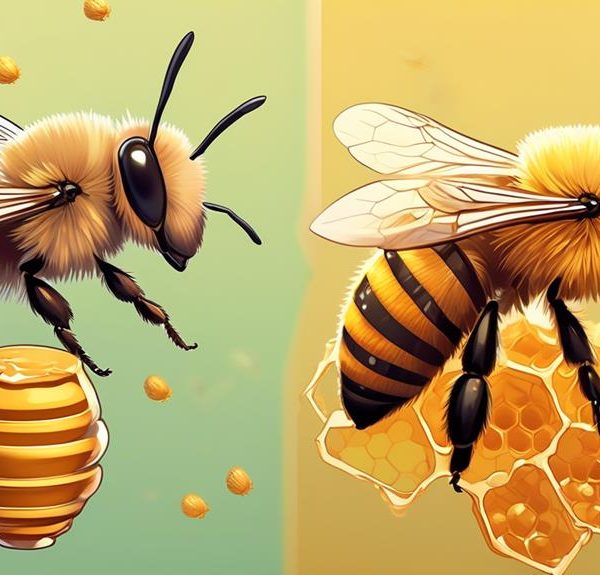Yearning to understand the world of pollinators? Discover the less-known, but incredibly efficient, mason bees in their pivotal role in our ecosystems.
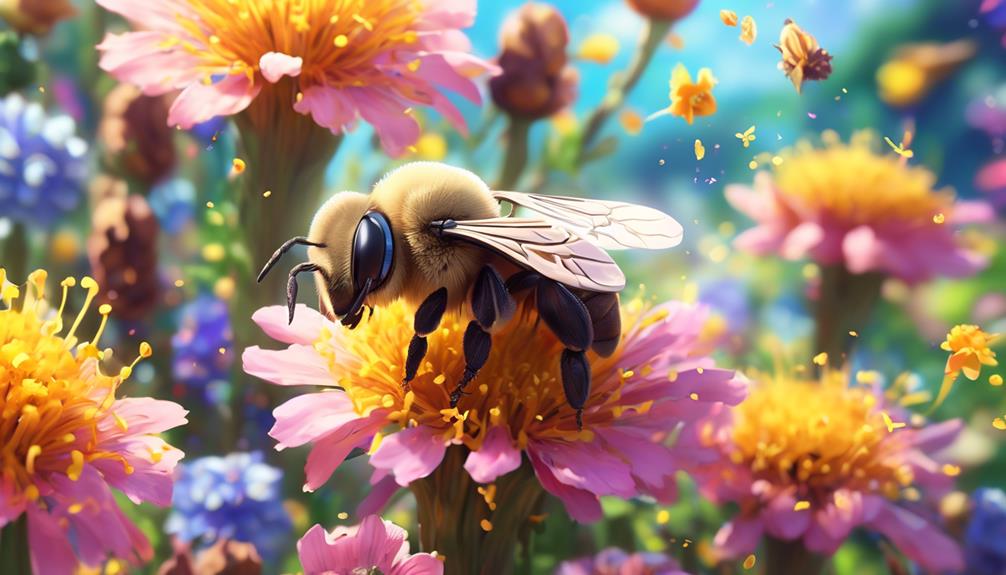
Are Mason Bees Good Pollenators
You've likely heard of honeybees and their crucial role in pollination, but have you ever considered the mason bee? Despite their lack of honey production, these industrious insects are actually more effective pollinators than their well-known counterparts.
Mason bees have a unique pollinating process, spreading pollen more thoroughly as they forage. This makes them a vital, yet often overlooked component of our ecosystems.
So, wouldn't you like to explore why these unsung heroes are indeed superb pollinators?
Key Takeaways
- Mason Bees are highly efficient pollinators, with one bee doing the work of 100 honeybees.
- They have a unique pollinating style with specialized hairs on their abdomen, resulting in effective cross-pollination.
- Mason Bees contribute to ecosystem health by increasing biodiversity, supporting the food chain, and creating nesting sites for other creatures.
- However, they face threats from parasites, diseases, habitat loss, pesticide exposure, and climate change.
Understanding the Mason Bee
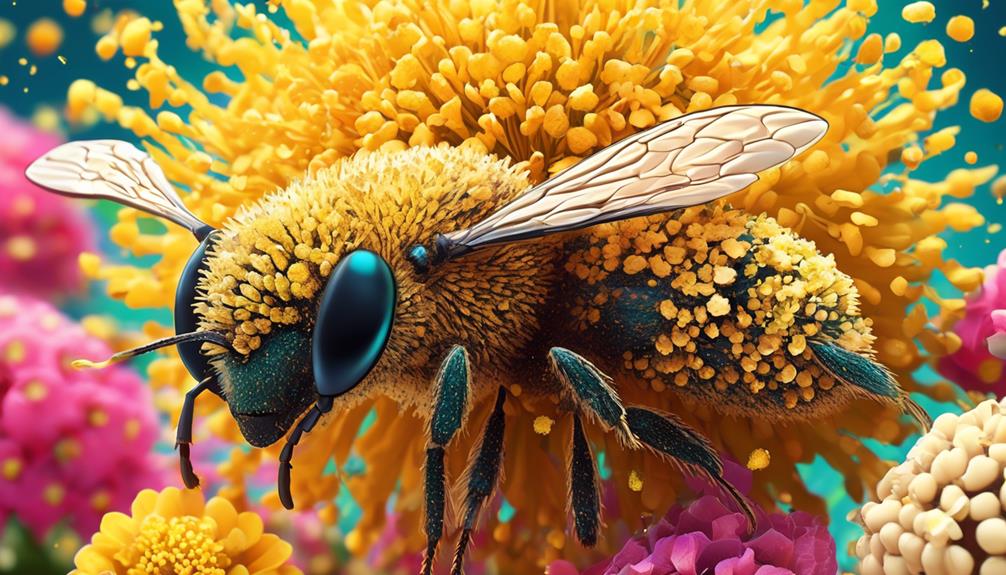
What exactly is a Mason Bee, you might wonder? Well, let's delve into this fascinating creature.
Mason Bees, named for their habit of using mud or other 'masonry' products in their nests, are a group of native bees belonging to the genus Osmia. They're solitary insects, meaning they live and breed independently, unlike their honeybee counterparts who live in colonies.
Now, you might think all bees are yellow and black, but that's not true for Mason Bees. These little fellas are often metallic blue or green, and they're small, about the size of a common housefly. One key feature of Mason Bees is that they're non-aggressive. They'll only sting if they feel threatened, and their sting is far less painful than that of a honeybee.
But why should you care about these tiny creatures? Here's why: Mason Bees are exceptional pollinators. In fact, they're one of the most effective pollinators on the planet. A single Mason Bee can do the work of 100 honeybees. That's right, 100!
Mason Bees Vs Honeybees: Pollination Efficiency
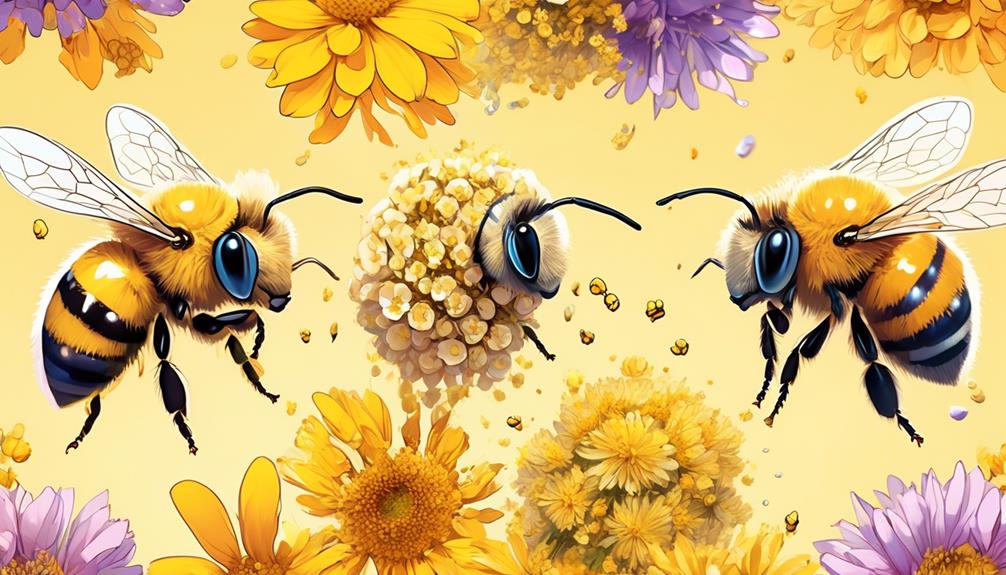
Building upon the exceptional pollination efficiency of Mason Bees, let's compare them to Honeybees, another well-known species, to truly understand their impact in our ecosystems.
While both bees are crucial to pollination, the Mason Bee's efficiency is quite remarkable. They're solitary, unlike honeybees, and each female is a queen who lays eggs. This drives them to pollinate more plants, as they're not just gathering pollen for a hive but for individual nests.
Honeybees tend to focus on one type of flower at a time, a phenomenon known as flower fidelity, which can limit the range of plants they pollinate. Conversely, Mason Bees are polylectic, meaning they're less picky and visit a variety of plants, thereby increasing cross-pollination.
Furthermore, Mason Bees are more effective in cool, wet weather compared to honeybees. Their fuzzy bodies pick up pollen effortlessly, transporting it from flower to flower, while honeybees carry pollen in specific sacs, making the transfer less efficient.
The Unique Pollinating Style of Mason Bees
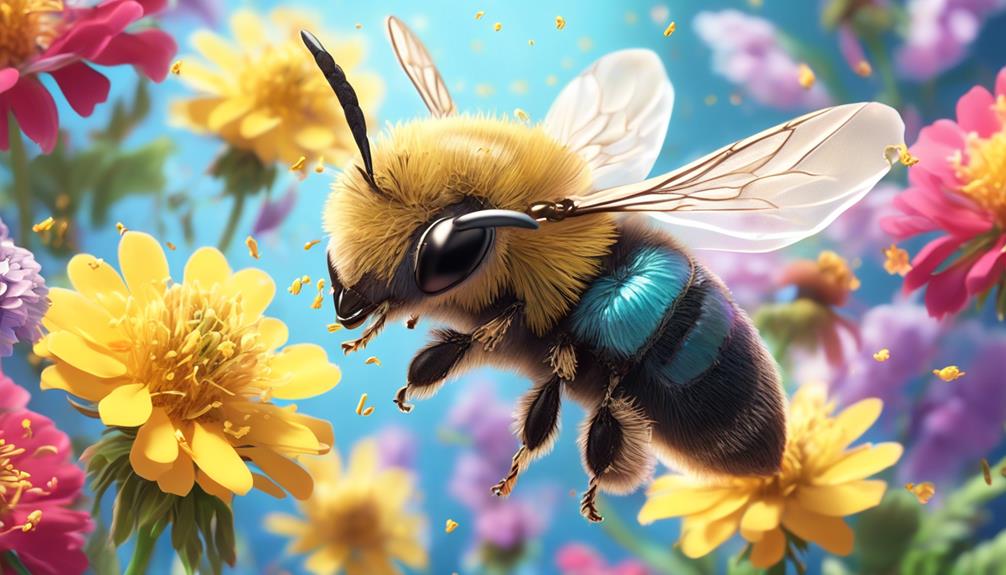
Mason Bees' unique pollinating style sets them apart in the realm of bee species, boasting a distinctiveness that significantly enhances their efficiency. Unlike honeybees that carry pollen on their hind legs, mason bees have specialized hairs on their abdomen known as scopa. When they visit a flower, they belly-flop into the pollen, filling their scopa with a rich load.
As you might imagine, this belly-flop technique is a messy affair. The pollen easily falls off as they fly from flower to flower, resulting in a highly effective cross-pollination process. This means that a single mason bee can pollinate many more flowers in a single trip than a honeybee can.
Moreover, mason bees are solitary, meaning they don't rely on a shared hive. Each female is a queen who builds her own nest, so they're less likely to spread diseases or parasites that can decimate entire colonies. This solitary nature, coupled with their unique pollinating style, makes mason bees excellent pollinators.
Mason Bees' Impact on Ecosystems
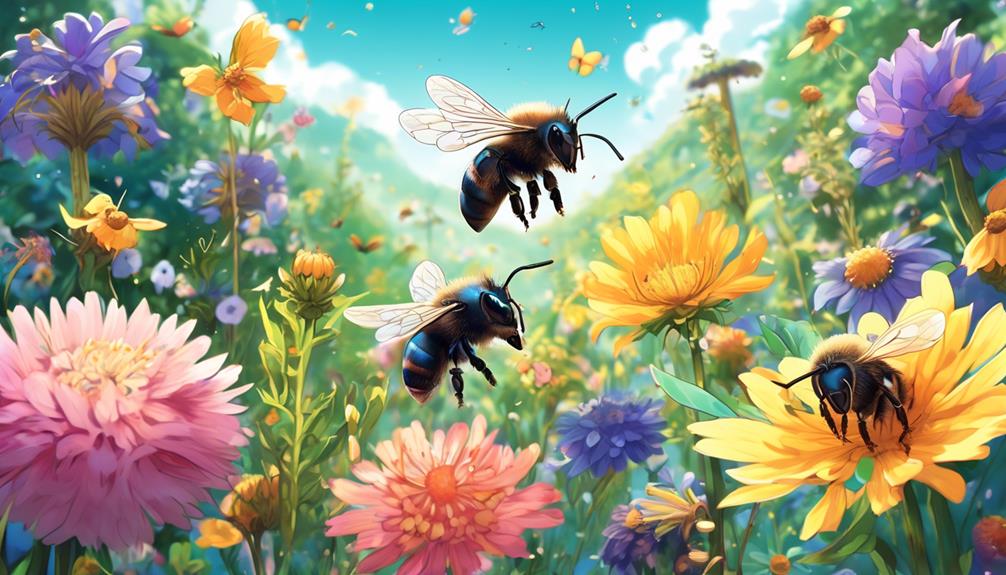
In understanding the broader ecological role of mason bees, it's essential to recognize their significant contribution to biodiversity and overall environmental health. They not only pollinate a variety of plants but also support the life cycles of other insects and birds by providing food and habitat.
Mason bees' impact on ecosystems can be illustrated with the following table:
Aspect of Ecosystem | Impact of Mason Bees | Examples |
|---|---|---|
Biodiversity | Increase | Pollinate different plant species |
Food Chain | Support | Provide food for birds, insects |
Habitat | Enhance | Nesting sites for other creatures |
Your garden, your local park, even a forest—these environments wouldn't be the same without mason bees. They're part of a delicate balance, a synergy of life that keeps our ecosystems functional and diverse. Their role in pollination is crucial, but their impact doesn't stop there. By supporting the food chain and enhancing habitats, mason bees help maintain the richness and resilience of our natural world.
In essence, mason bees are vital to our planet's health. They're one of the many species that remind us of the interconnectedness of all life.
Encouraging Mason Bees in Your Garden
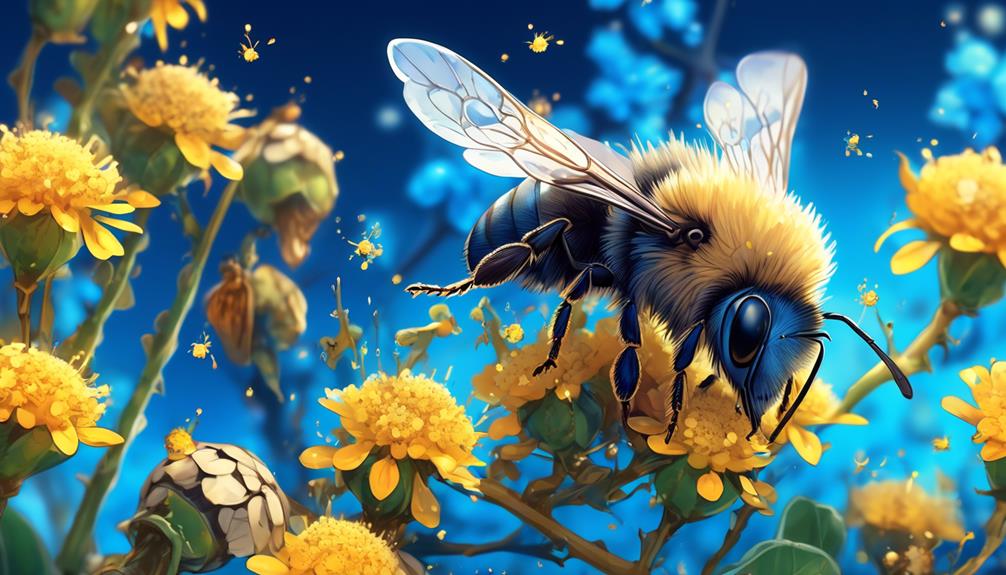
To foster a thriving ecosystem in your backyard, consider inviting mason bees by creating a conducive environment for them. Mason bees are solitary insects, not hive dwellers like honeybees, so they don't need a lot of space. A simple bee house, which you can purchase or DIY, can provide the shelter they need.
Mason bees are drawn to sunny locations with morning light. Position your bee house 3 to 7 feet off the ground, preferably near flowering plants. These bees are excellent pollinators, but they need pollen and nectar sources close by. Planting a variety of native flowering plants will enhance their feeding options and increase their productivity.
Mason bees also need mud to seal their nests. If you don't have a naturally occurring mud source in your yard, consider creating a mud pit. A shallow dish with a mix of soil and water should suffice.
Threats to Mason Bees and Their Pollination

While you're working hard to create a safe haven for these solitary pollinators, it's equally important to be aware of the threats that can undermine mason bees' health and their pollination efforts.
Pests are a significant concern. Parasitic mites can infest bee nests, feeding on bee larvae and transmitting diseases. Another pest, the chalkbrood fungus, can infect the larvae, causing them to turn into a chalk-like substance and lose their ability to metamorphose into adult bees.
Habitat loss is another serious threat. Urban development, intensive farming, and the consequent destruction of natural spaces all contribute to a decline in the availability of the natural habitats these bees require for nesting and foraging.
Pesticide exposure, particularly to neurotoxic insecticides known as neonicotinoids, poses a significant risk to mason bees. These chemicals can affect the bees' ability to forage, navigate, and reproduce, severely impacting their pollination efforts.
Climate change also threatens mason bees. Changes in temperature and precipitation patterns can disrupt their lifecycle, affecting their emergence, foraging, and reproductive timing.
Frequently Asked Questions
What Types of Plants Are Most Commonly Pollinated by Mason Bees?
You're likely to find Mason bees buzzing around a variety of plants. They're particularly fond of fruit trees, such as apple, cherry, and plum. But they don't stop there. Mason bees also visit berries, cucumbers, and many wildflowers.
They're versatile pollinators, capable of pollinating a wide range of plants. Remember, their pollination efficiency often surpasses that of honeybees, making them a gardener's best friend.
Can Mason Bees Be Harmful or Dangerous to Humans or Pets?
No, mason bees aren't harmful or dangerous to humans or pets. They're non-aggressive and only sting if they're trapped or squished. Even then, their sting is less painful than a mosquito bite. They don't cause any structural damage either, as they prefer to nest in pre-existing holes.
Is There a Specific Season When Mason Bees Are Most Active in Pollination?
Yes, there's a specific season when Mason Bees are most active in pollination. These bees emerge in early spring, when temperatures reach about 55 degrees Fahrenheit. They're most active in pollination during this time, as they're attracted to early spring flowers.
How Do Changing Climates or Weather Patterns Affect Mason Bees and Their Pollination Habits?
Changing climates can severely impact mason bees. These bees are most active in specific seasons. When weather patterns fluctuate unpredictably, it can disrupt their pollinating cycle.
For example, a warmer winter might trick them into emerging early, before flowers have bloomed. Conversely, a late spring frost could wipe out the flowers they depend on.
Can Mason Bees Coexist With Other Bee Species in the Same Habitat?
Yes, you'll find that mason bees can coexist with other bee species in the same habitat. They're non-aggressive and solitary, so they don't compete with other bees for resources.
In fact, they can even share nesting sites with other solitary bees. However, they're sensitive to pesticides and habitat loss, so it's important to protect their environments.
But, with the right conditions, they can thrive alongside other bee species.
Conclusion
In short, mason bees are exceptional pollinators. Their unique, messy pollinating style and higher efficiency than honeybees make them vital to our ecosystems. Encouraging them in your garden can greatly boost plant health and productivity.
However, they're under threat from habitat loss and pesticides. It's crucial we take action to protect these industrious, hardworking insects and, in doing so, safeguard our own food supply and the biodiversity of our planet.


